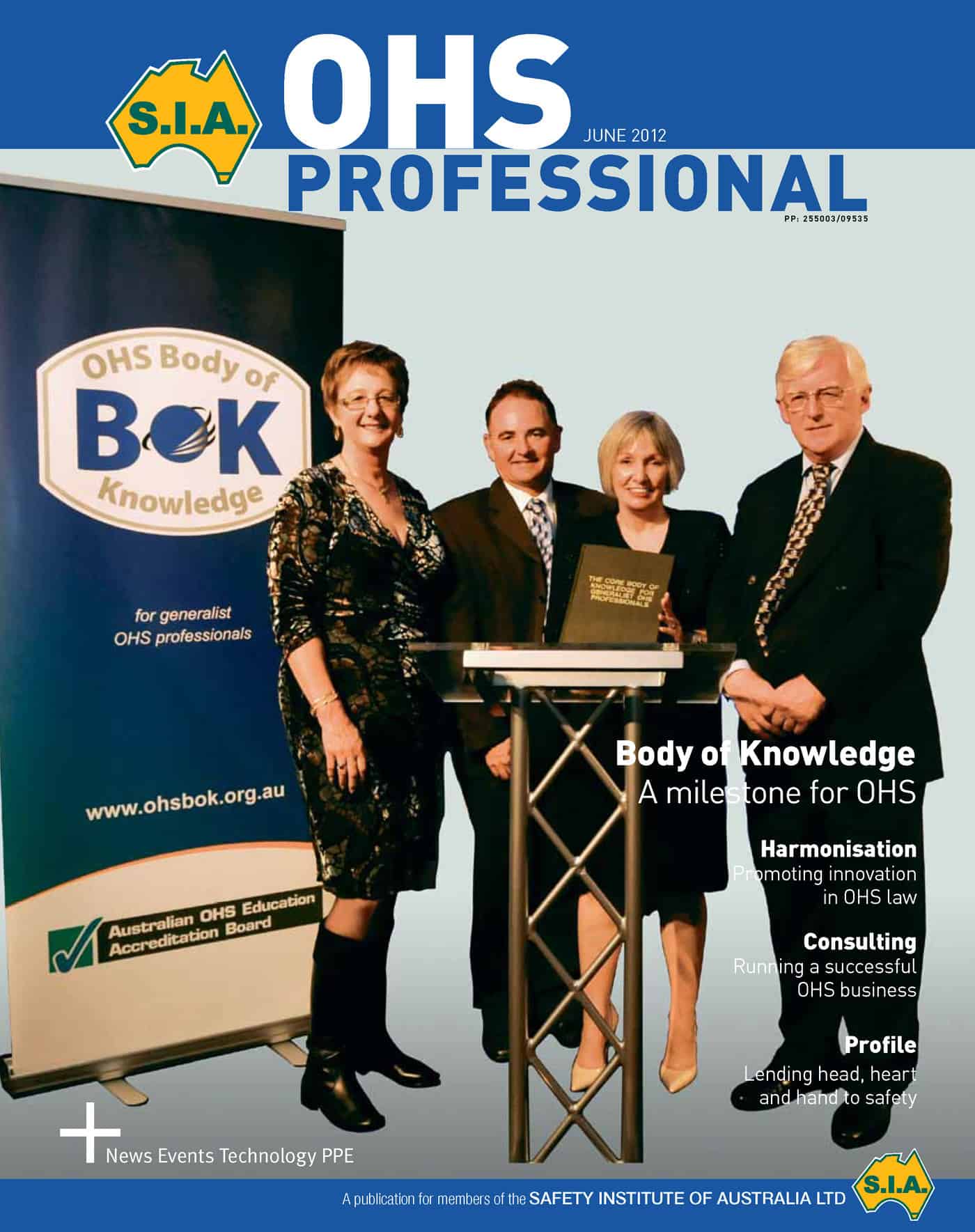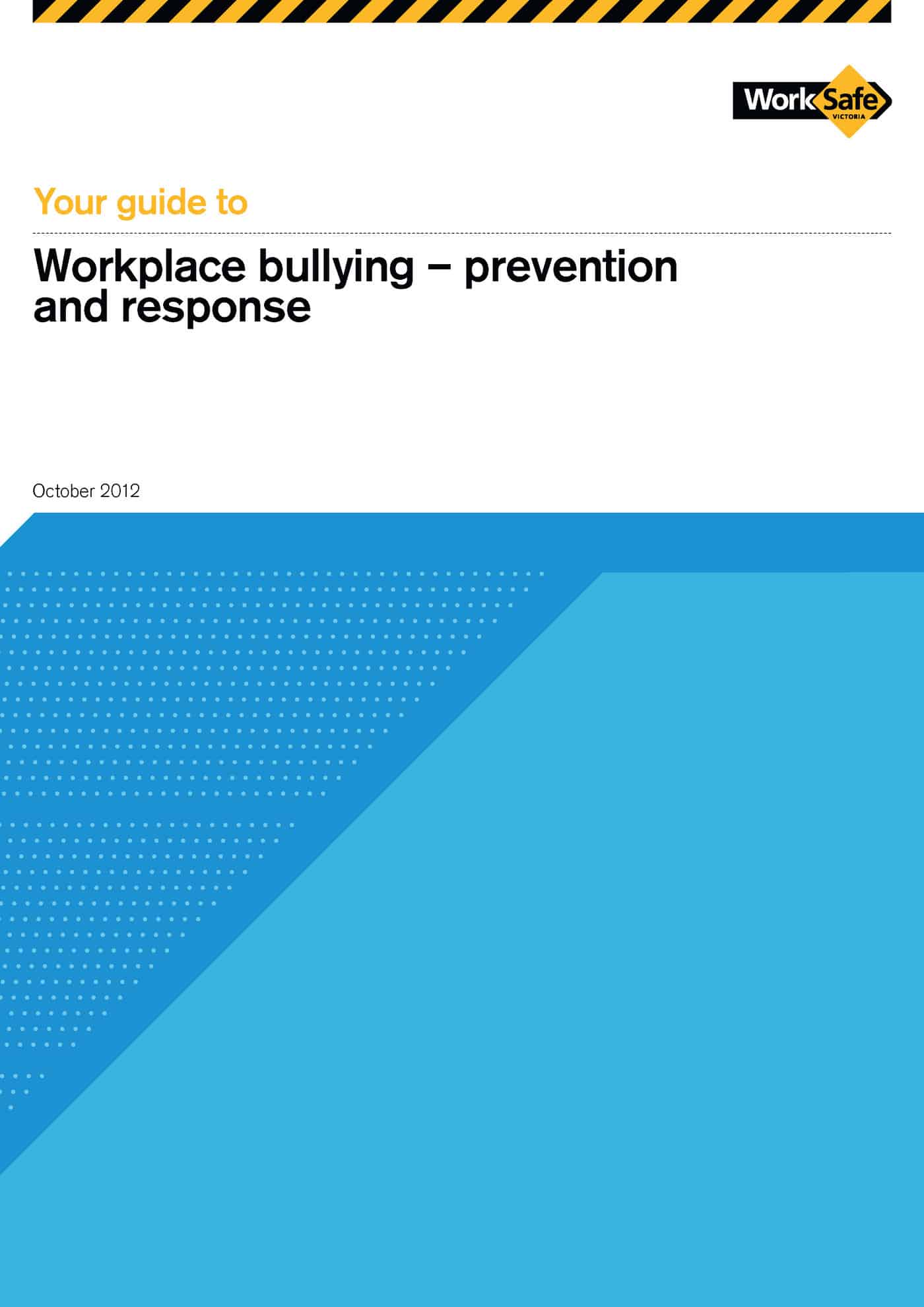As part of the annual WorkSafe Week, WorkSafe‘s Ian Forsyth presented the organisation’s OHS strategy to a large crowd at the Melbourne Convention Centre on 28 October 2012.
Harmonisation
Clearly Forsyth anticipated questions about the Victorian Government’s decision not to implement the model Work Health and Safety laws that will exist in all but two States and territories from 1 January 2013. He stressed that the government is adamant that the WHS laws will not be introduced “in the foreseeable future” and therefore Victorians need to refocus on compliance with the existing Victorian laws. He effectively shutdown any discussion on those laws before they started. The laws are off the Victorian table so let’s start working with what we have.
His stance has great significance for Victorian businesses and almost projected isolationism as a positive move. Part of his, familiar, justification was that the model WHS laws were based largely on the Victorian occupational health and safety laws and so there is little need to change, particular if the change would increase the regulatory cost burden to Victorian businesses.
However, there is also the counter argument that if the laws are so similar why not change, particularly when only one State, Western Australia, is holding out on implementing those laws? In short, the Victorian Government has made its decision and government authorities must work within those decisions.
Statistics
Ian Forsyth bolstered his argument about the lack of a need to change by presenting data that shows that, without model WHS laws, Victorian remains the safest State in Australia. He stated that since 2007 WorkSafe aimed for 8.5 workers compensation injury claims per 1000 workers. It achieved 10.17 claims per 1000 workers and this will be the operational baseline for the next five years.
He mentioned that by 2017 WorkSafe was aiming for a “10 – 15% improvement” but the performance calculation will change from claims per 1000 workers (CP1000) to claims per 1 million hours worked (CPMHW), a metric more compatible with performance indicators elsewhere, however it was unclear which metric the improvement would be based on. Performance benchmarks need to be clear and enforceable to have any validity. A WorkSafe spokesperson responded to SafetyAtWorkBlog’s enquiry about this by stating:
“…the two measures are largely ‘like for like’. At the end of 2011/12, we recorded 10.17 CP1000 and 8.03 CPMHW. We are now seeking a 10-15% reduction in CPMHW over the five years of WorkSafe 2017.”
It also seemed odd that, according to Ian Forsyth and confirmed by his spokesperson, the hours worked statistics are obtained through the Australian Bureau of Statistics (ABS). The ABS is a reputable government organisation but hours worked are often provided directly to WorkSafe by those companies within Victoria’s workers compensation scheme. The CPMHW data was projected as a more robust and reliable “measure of the rate of injury for the exposure of risk to Victorian workers (part-time and full-time)”.
Employee Satisfaction and Bullying
Forysth also showed that a WorkSafe employee opinion survey showed a 67% satisfaction. This still leaves a level of dissatisfaction in the WorkSafe workforce of one-third which should be a ratio of some concern. Yes, prior to WorkSafe’s presentation on Monday there were protesting employees outside the conference centre but this was explained as part of the process for negotiating a new Enterprise Bargaining Agreement.
 Harder to counter was the very public accusations of workplace bullying within WorkSafe made be Clarke Martin, a former mid-level manager with WorkSafe and prominent supporter of the safety profession and the Safety Institute of Australia. On the ABC”s current affairs program, 7.30, on 25 October 2012 (video and transcript available), Clarke Martin stated that:
Harder to counter was the very public accusations of workplace bullying within WorkSafe made be Clarke Martin, a former mid-level manager with WorkSafe and prominent supporter of the safety profession and the Safety Institute of Australia. On the ABC”s current affairs program, 7.30, on 25 October 2012 (video and transcript available), Clarke Martin stated that:
“There are pockets in WorkSafe that have got what you would describe as threatening, intimidating environments. And, yes, I have seen that and it is very, very disappointing.”
Similar bullying allegations against WorkSafe have been made previously but Martin’s former position in the hierarchy adds weight to his claims.
 Martin’s general accusations, shared by Karen Batt of the CPSU and lawyer Josh Bernstein, established a subtext to much of the presentation by Ian Forsyth and other WorkSafe executives on 28 October. This subtext was particularly obvious on 29 October 2012 when WorkSafe launched its new guidance material on the prevention and response to workplace bullying. WorkSafe’s Bernie Dean and Maria Batchelor did the heavy lifting on this guidance but always at the back of many peoples’ minds was Clarke Martin’s comment:
Martin’s general accusations, shared by Karen Batt of the CPSU and lawyer Josh Bernstein, established a subtext to much of the presentation by Ian Forsyth and other WorkSafe executives on 28 October. This subtext was particularly obvious on 29 October 2012 when WorkSafe launched its new guidance material on the prevention and response to workplace bullying. WorkSafe’s Bernie Dean and Maria Batchelor did the heavy lifting on this guidance but always at the back of many peoples’ minds was Clarke Martin’s comment:
“WorkSafe has to be the exemplar. We have to lead everyone in our practices. And it is just so disheartening to hear about, see management practices that aren’t delivering the kind of exemplary behaviour that’s needed.”
If Martin’s accusations are valid, how can WorkSafe, who has been advising on the issue of workplace bullying (and leading the field on guidance material on this issue in Australia) for over ten years, not be able to control its own toxic workplace? On a first cut the guidance seems useful and a positive development on previous guides but there was a whiff of hypocrisy in the guide’s launch, a perception that was raised with me by participants after the event.
Martin’s comment on being an exemplar echoes the recommendations of Chris Maxwell QC who undertook a review of Victoria’s OHS laws in 2004. Maxwell devoted an entire chapter (23) to the public sector as an OHS exemplar and suggests, on page 227
“…that government (as employer and dutyholder, and as policy maker) can, and should, be an exemplar of OHS best practice. By taking the lead in the systematic management of occupational health and safety, government can influence the behaviour of individuals and firms upon whom duties are imposed by the OHS legislation.”
The question above has considerable validity because if experts on the control of workplace bullying cannot establish a harmonious workplace in their own offices, how can the OHS regulator expect other organisations, many with considerably less expertise and resources, achieve a positive workplace culture? WorkSafe has a major challenge on its hands to remove any perception of hypocrisy and to show that even a large public sector authority can achieve positive cultural results. When Ian Forsyth speaks at next year’s WorkSafe Week events, the employees’ opinion survey dare not show anything less than a major improvement on the current 67%.

One thought on “Challenges for WorkSafe Victoria at WorkSafe Week”